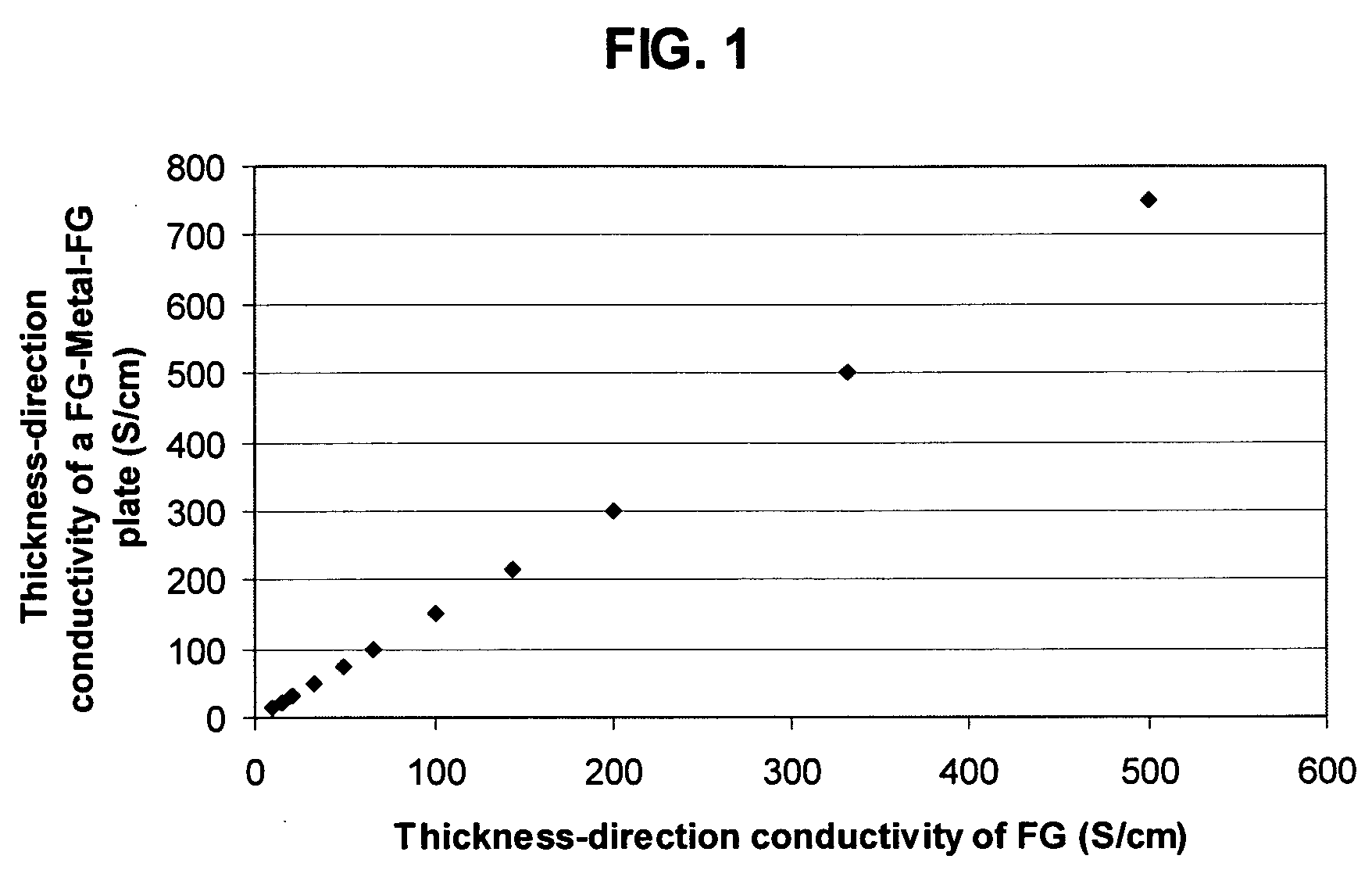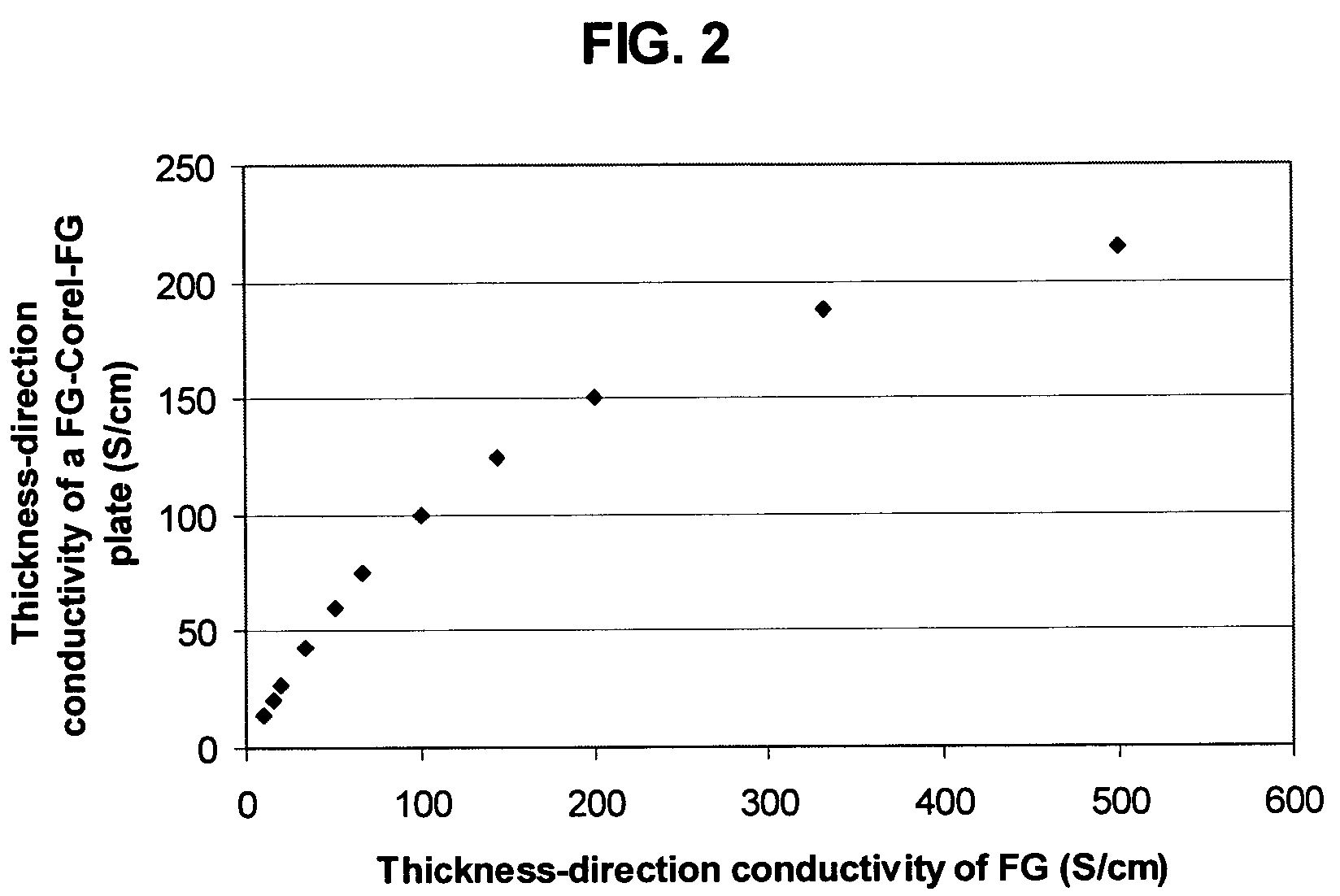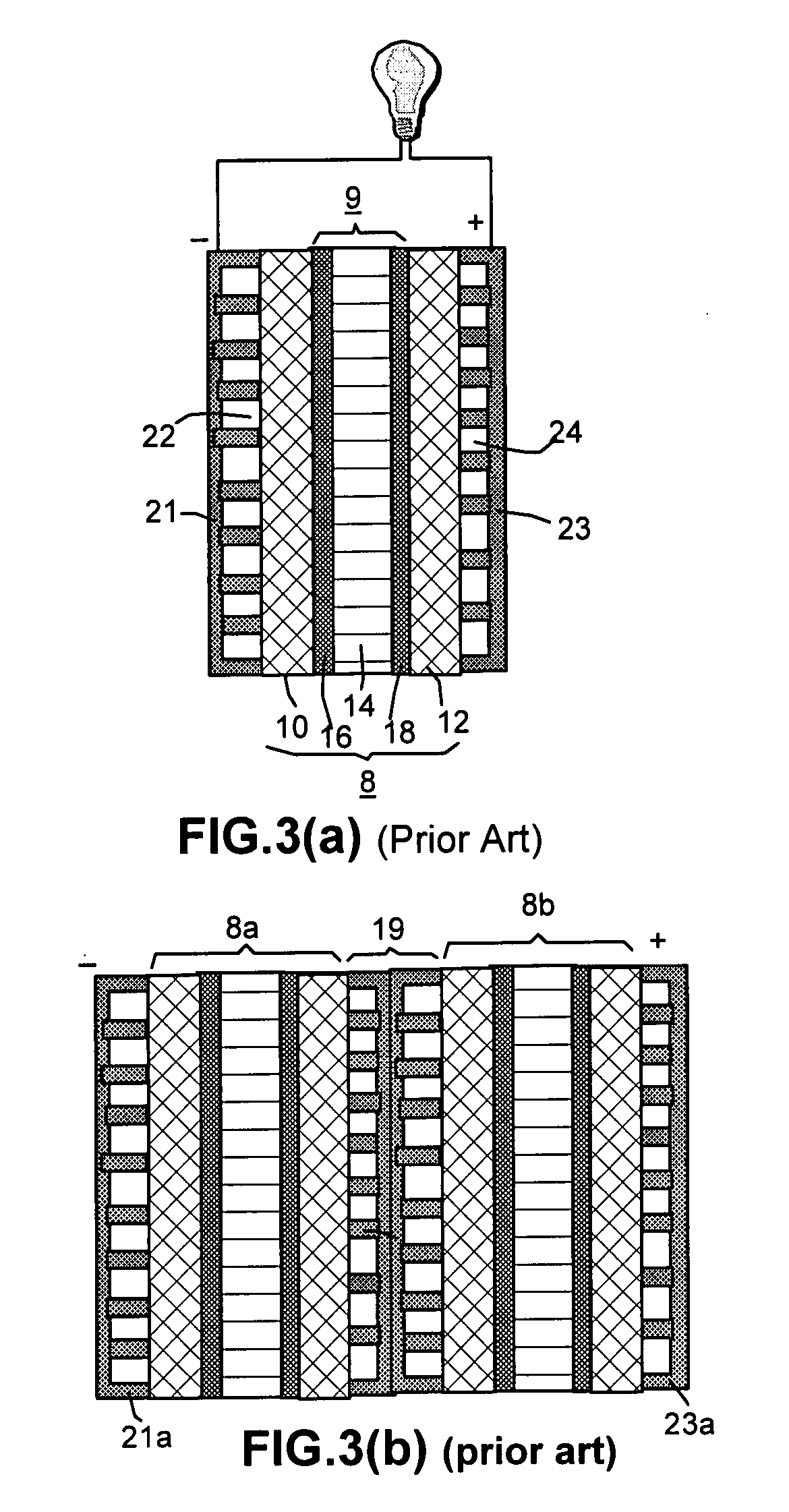Recompressed exfoliated graphite articles
a graphite and composition technology, applied in the direction of non-metal conductors, conductors, synthetic resin layered products, etc., can solve the problems of significant impact on the performance, durability, cost, and cost of a fuel cell system, and achieve the effects of less anisotropy, enhanced isotropy, and easy molded or embossed
- Summary
- Abstract
- Description
- Claims
- Application Information
AI Technical Summary
Benefits of technology
Problems solved by technology
Method used
Image
Examples
example 1
Mixtures of Expanded Graphite and Non-Expandable Natural Graphite
[0069]A series of mixture compacts, Sample 1-A to 1-H, were prepared as follows:
[0070]Approximately 0%, 10%, 20%, 30%, 40%, 50%, 60%, and 70% by weight of non-expandable natural graphite particles and corresponding 100% to 30% by weight of acid-intercalated, expandable graphite (based on the total weight of expandable and non-expandable graphite) were mixed to form expandable mixtures. The non-expandable graphite was intended as an isotropy-promoting agent, which can also enhanced the electrical conductivity. The various two-component mixtures were separately enclosed in a quartz tube, which was purged with nitrogen gas and then loosely sealed from both ends of the tube with ceramic cloth. The tube was rapidly transferred to the center of a tube furnace pre-heated to a temperature of 1,050° C. and maintained at that position for 20 seconds. Rapid expansion or exfoliation of the expandable graphite occurred. It may be n...
example 2
Mixtures of Expandable Graphite and Non-Expandable Spheroidal Graphite (Uniaxial Compression in the X-Direction, Followed by a Rolling Compression in the Z-Direction According to Approach 1)
[0073]A series of mixture compacts, Sample 2-A to 2-D, were prepared as follows: Approximately 0%, 5%, 15%, and 35% by weight of non-expandable, spheroidal graphite particles (supplied from Hua Dong Graphite Co., Pingdu, China) and the balanced amounts (100% to 65% by weight) of acid-intercalated, expandable graphite were mixed to form expandable mixtures. The various two-component mixture were separately enclosed in a quartz tube, which was purged with nitrogen gas and then loosely sealed from both ends of the tube with ceramic cloth. The tube was rapidly transferred to the center of a tube furnace pre-heated to a temperature of 1,050° C. and maintained at that position for 20 seconds. Rapid expansion or exfoliation of the expandable graphite occurred.
[0074]A desired amount of each of the variou...
example 4
Mixtures of Expanded Graphite and Non-Expandable Spheroidal Graphite (Isostatically Compressed, Followed by Z-Directional Compression, According to Approach 2)
[0080]A series of mixture compacts (Sample 4-A to 4-C) were prepared as follows: An expandable graphite sample was prepared by immersing a blend of 50% short graphite fibers and 50% spheroidal graphite in a solution composed of sulfuric acid, nitric acid, and potassium permanganate (at a ratio of 4:1:0.05) at room temperature for 20 hours. The solid mixture was washed and rinsed until the pH value of the rinsing water reaches at least 6.0. The solid mixture was than dried in a ventilated chemical hood. The resulting product was the desired expandable graphite component. The mixture was enclosed in a quartz tube, which was purged with nitrogen gas and then loosely sealed from both ends of the tube with ceramic cloth. The tube was rapidly transferred to the center of a tube furnace pre-heated to a temperature of 1,050° C. and ma...
PUM
| Property | Measurement | Unit |
|---|---|---|
| Length | aaaaa | aaaaa |
| Length | aaaaa | aaaaa |
| Fraction | aaaaa | aaaaa |
Abstract
Description
Claims
Application Information
 Login to View More
Login to View More - R&D
- Intellectual Property
- Life Sciences
- Materials
- Tech Scout
- Unparalleled Data Quality
- Higher Quality Content
- 60% Fewer Hallucinations
Browse by: Latest US Patents, China's latest patents, Technical Efficacy Thesaurus, Application Domain, Technology Topic, Popular Technical Reports.
© 2025 PatSnap. All rights reserved.Legal|Privacy policy|Modern Slavery Act Transparency Statement|Sitemap|About US| Contact US: help@patsnap.com



